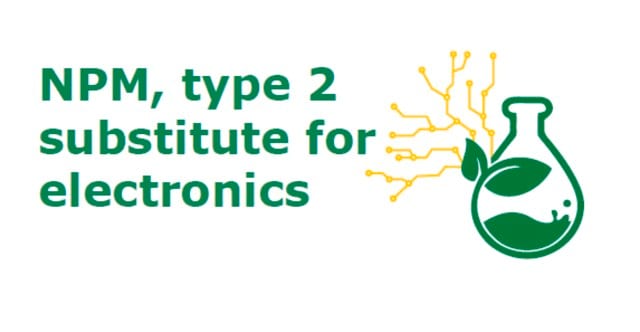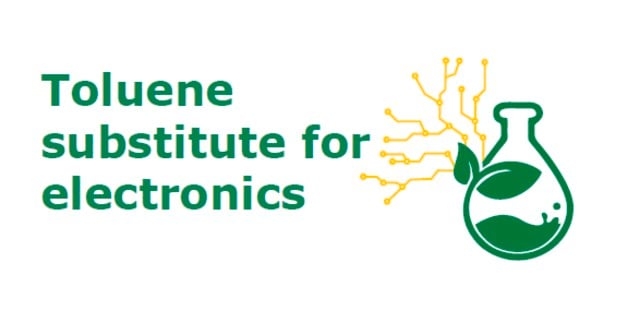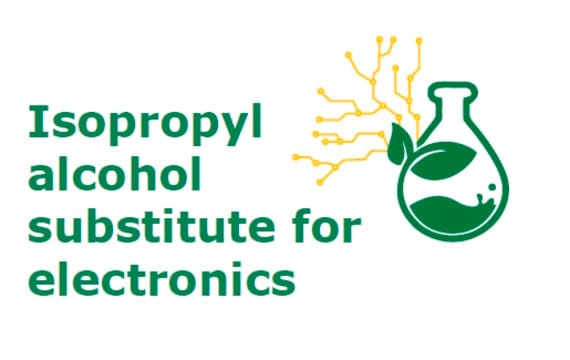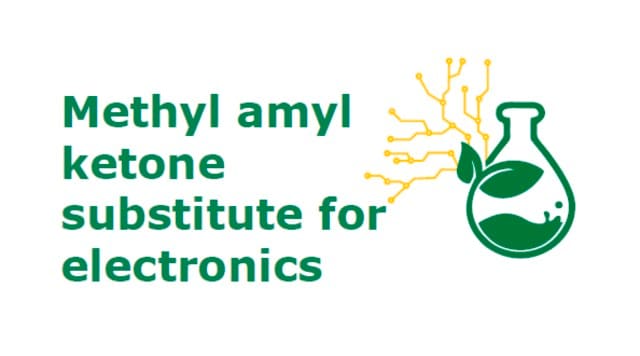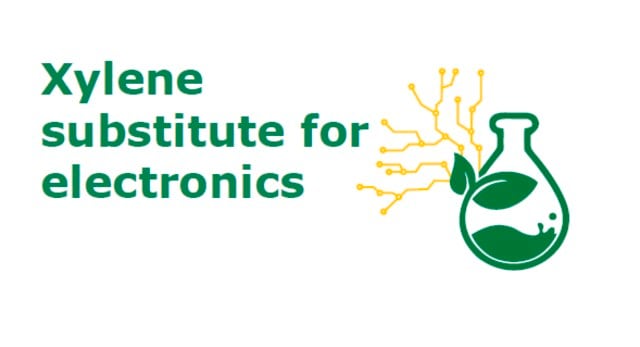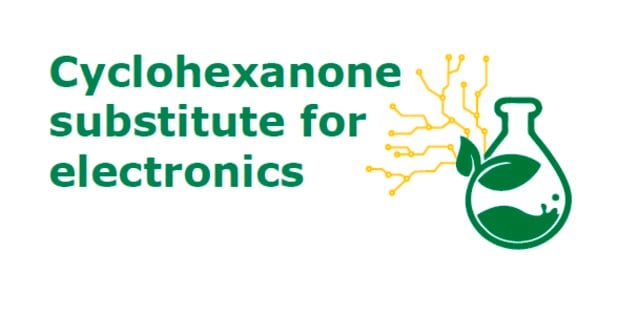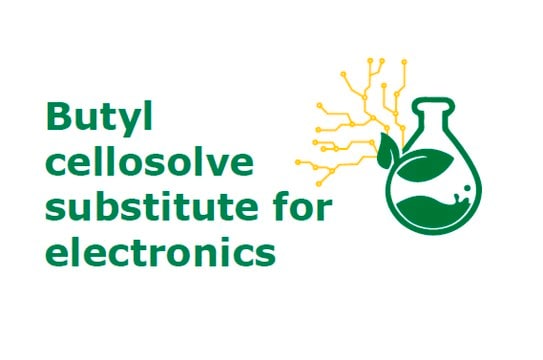929719
ElectroGreen®
NMP substitute for electronics - type 1, bio-sourced
About This Item
Recommended Products
grade
for electronic purposes
Quality Level
vapor pressure
~1.0 mmHg ( 20 °C)
description
Relative Evaporation rate: <0.05
Hansen solubility parameters: SPd 8.8; SPp 5.9; SPh 3.7
Assay
≥99% (GC)
form
liquid
greener alternative product characteristics
Design for Energy Efficiency
Use of Renewable Feedstocks
Learn more about the Principles of Green Chemistry.
impurities
≤1 ppm As, Cr, Cd, Cu, Hg, Mn, Ni, Pb, trace (each)
≤3 ppm Zn, trace
0.03 wt. % Acidity (as lactic acid)
0.04 wt. % Water
evapn. residue
≤0.05%
color
clear
viscosity
16.1 cP(20 °C)
bp
~154 °C (Initial)
density
1.094 at 25 °C (Specific gravity)
greener alternative category
Looking for similar products? Visit Product Comparison Guide
General description
This solvent blend consists of propylene carbonate 50-70%, Ethyl lactate 30-50%; ethyl 3-ethoxypropionate 20-30%.
Application
Storage and Stability
Legal Information
Signal Word
Danger
Hazard Statements
Precautionary Statements
Hazard Classifications
Eye Dam. 1 - STOT SE 3
Target Organs
Respiratory system
Supplementary Hazards
Storage Class Code
10 - Combustible liquids
WGK
WGK 1
Flash Point(F)
156.9 °F
Flash Point(C)
69.4 °C
Certificates of Analysis (COA)
Search for Certificates of Analysis (COA) by entering the products Lot/Batch Number. Lot and Batch Numbers can be found on a product’s label following the words ‘Lot’ or ‘Batch’.
Already Own This Product?
Find documentation for the products that you have recently purchased in the Document Library.
Articles
Carbon-based Sustainable Organic Electronics (SOE) limit the use of critical elements and biodegrade at their end-of-life. This review offers insight on how structural and energy disorder in these materials influence device performance and includes evaluations of various transport models and their limitations.
Carbon-based Sustainable Organic Electronics (SOE) limit the use of critical elements and biodegrade at their end-of-life. This review offers insight on how structural and energy disorder in these materials influence device performance and includes evaluations of various transport models and their limitations.
Carbon-based Sustainable Organic Electronics (SOE) limit the use of critical elements and biodegrade at their end-of-life. This review offers insight on how structural and energy disorder in these materials influence device performance and includes evaluations of various transport models and their limitations.
Carbon-based Sustainable Organic Electronics (SOE) limit the use of critical elements and biodegrade at their end-of-life. This review offers insight on how structural and energy disorder in these materials influence device performance and includes evaluations of various transport models and their limitations.
Our team of scientists has experience in all areas of research including Life Science, Material Science, Chemical Synthesis, Chromatography, Analytical and many others.
Contact Technical Service